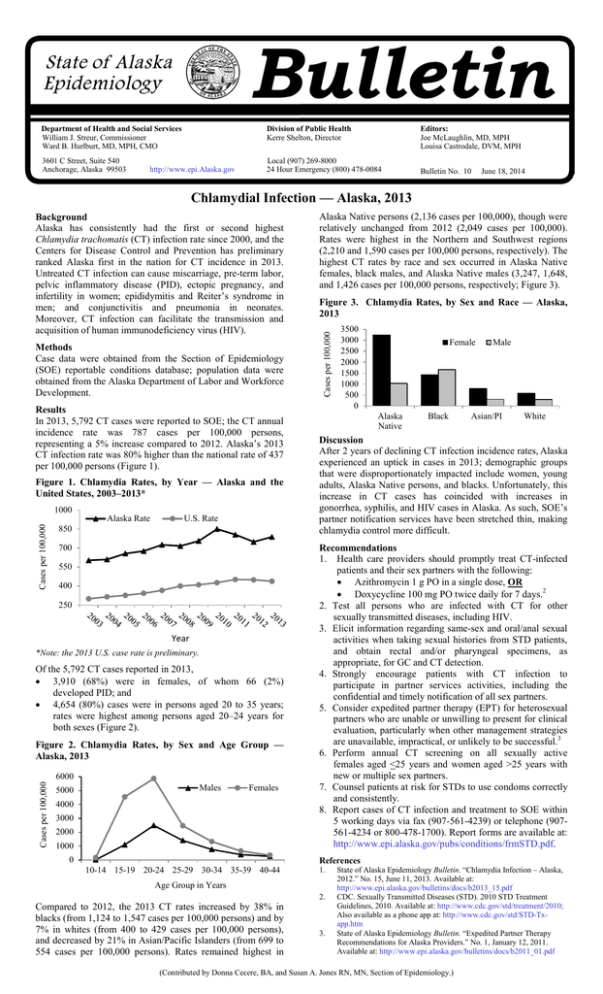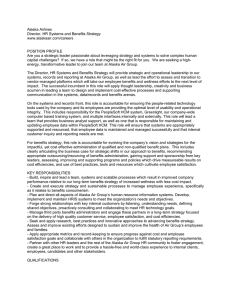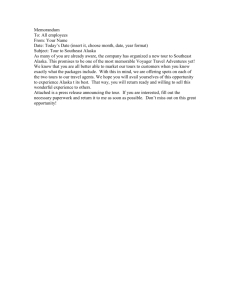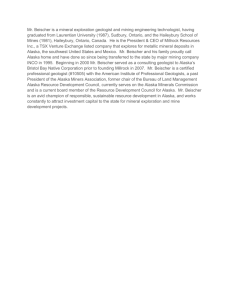Chlamydial Infection — Alaska, 2013
advertisement

Department of Health and Social Services William J. Streur, Commissioner Ward B. Hurlburt, MD, MPH, CMO Division of Public Health Kerre Shelton, Director 3601 C Street, Suite 540 Anchorage, Alaska 99503 Local (907) 269-8000 24 Hour Emergency (800) 478-0084 http://www.epi.Alaska.gov Editors: Joe McLaughlin, MD, MPH Louisa Castrodale, DVM, MPH Bulletin No. 10 June 18, 2014 Chlamydial Infection — Alaska, 2013 Methods Case data were obtained from the Section of Epidemiology (SOE) reportable conditions database; population data were obtained from the Alaska Department of Labor and Workforce Development. Results In 2013, 5,792 CT cases were reported to SOE; the CT annual incidence rate was 787 cases per 100,000 persons, representing a 5% increase compared to 2012. Alaska’s 2013 CT infection rate was 80% higher than the national rate of 437 per 100,000 persons (Figure 1). Figure 1. Chlamydia Rates, by Year — Alaska and the United States, 2003–2013* 1000 Cases per 100,000 Alaska Rate U.S. Rate 850 700 550 400 250 Year *Note: the 2013 U.S. case rate is preliminary. Of the 5,792 CT cases reported in 2013, • 3,910 (68%) were in females, of whom 66 (2%) developed PID; and • 4,654 (80%) cases were in persons aged 20 to 35 years; rates were highest among persons aged 20–24 years for both sexes (Figure 2). Figure 2. Chlamydia Rates, by Sex and Age Group — Alaska, 2013 Cases per 100,000 6000 5000 Males Females 4000 3000 2000 1000 0 Alaska Native persons (2,136 cases per 100,000), though were relatively unchanged from 2012 (2,049 cases per 100,000). Rates were highest in the Northern and Southwest regions (2,210 and 1,590 cases per 100,000 persons, respectively). The highest CT rates by race and sex occurred in Alaska Native females, black males, and Alaska Native males (3,247, 1,648, and 1,426 cases per 100,000 persons, respectively; Figure 3). Figure 3. Chlamydia Rates, by Sex and Race — Alaska, 2013 Cases per 100,000 Background Alaska has consistently had the first or second highest Chlamydia trachomatis (CT) infection rate since 2000, and the Centers for Disease Control and Prevention has preliminary ranked Alaska first in the nation for CT incidence in 2013. Untreated CT infection can cause miscarriage, pre-term labor, pelvic inflammatory disease (PID), ectopic pregnancy, and infertility in women; epididymitis and Reiter’s syndrome in men; and conjunctivitis and pneumonia in neonates. Moreover, CT infection can facilitate the transmission and acquisition of human immunodeficiency virus (HIV). 3500 3000 2500 2000 1500 1000 500 0 Female Alaska Native Black Male Asian/PI White Discussion After 2 years of declining CT infection incidence rates, Alaska experienced an uptick in cases in 2013; demographic groups that were disproportionately impacted include women, young adults, Alaska Native persons, and blacks. Unfortunately, this increase in CT cases has coincided with increases in gonorrhea, syphilis, and HIV cases in Alaska. As such, SOE’s partner notification services have been stretched thin, making chlamydia control more difficult. Recommendations 1. Health care providers should promptly treat CT-infected patients and their sex partners with the following: • Azithromycin 1 g PO in a single dose, OR • Doxycycline 100 mg PO twice daily for 7 days.2 2. Test all persons who are infected with CT for other sexually transmitted diseases, including HIV. 3. Elicit information regarding same-sex and oral/anal sexual activities when taking sexual histories from STD patients, and obtain rectal and/or pharyngeal specimens, as appropriate, for GC and CT detection. 4. Strongly encourage patients with CT infection to participate in partner services activities, including the confidential and timely notification of all sex partners. 5. Consider expedited partner therapy (EPT) for heterosexual partners who are unable or unwilling to present for clinical evaluation, particularly when other management strategies are unavailable, impractical, or unlikely to be successful.3 6. Perform annual CT screening on all sexually active females aged <25 years and women aged >25 years with new or multiple sex partners. 7. Counsel patients at risk for STDs to use condoms correctly and consistently. 8. Report cases of CT infection and treatment to SOE within 5 working days via fax (907-561-4239) or telephone (907561-4234 or 800-478-1700). Report forms are available at: http://www.epi.alaska.gov/pubs/conditions/frmSTD.pdf. References 10-14 15-19 20-24 25-29 30-34 35-39 40-44 1. Age Group in Years 2. Compared to 2012, the 2013 CT rates increased by 38% in blacks (from 1,124 to 1,547 cases per 100,000 persons) and by 7% in whites (from 400 to 429 cases per 100,000 persons), and decreased by 21% in Asian/Pacific Islanders (from 699 to 554 cases per 100,000 persons). Rates remained highest in 3. State of Alaska Epidemiology Bulletin. “Chlamydia Infection – Alaska, 2012.” No. 15, June 11, 2013. Available at: http://www.epi.alaska.gov/bulletins/docs/b2013_15.pdf CDC. Sexually Transmitted Diseases (STD). 2010 STD Treatment Guidelines, 2010. Available at: http://www.cdc.gov/std/treatment/2010; Also available as a phone app at: http://www.cdc.gov/std/STD-Txapp.htm State of Alaska Epidemiology Bulletin. “Expedited Partner Therapy Recommendations for Alaska Providers.” No. 1, January 12, 2011. Available at: http://www.epi.alaska.gov/bulletins/docs/b2011_01.pdf (Contributed by Donna Cecere, BA, and Susan A. Jones RN, MN, Section of Epidemiology.)







